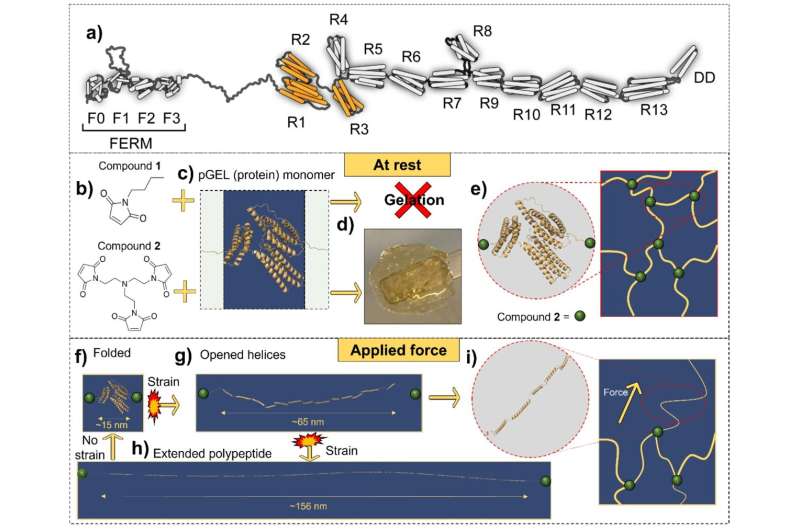Team creates protein-based material that can stop supersonic impacts

A University of Kent team, led by Professors Ben Goult and Jen Hiscock, has created and patented a new shock-absorbing material that could revolutionize both the defense and planetary science sectors.
This novel protein-based family of materials, named TSAM (Talin Shock Absorbing Materials), represents the first known example of a SynBio (or synthetic biology) material capable of absorbing supersonic projectile impacts. This opens the door for the development of next-generation bulletproof armor and projectile capture materials to enable the study of hypervelocity impacts in space and the upper atmosphere (astrophysics).
Professor Ben Goult explained, "Our work on the protein talin, which is the cell's natural shock absorber, has shown that this molecule contains a series of binary switch domains which open under tension and refold again once tension drops. This response to force gives talin its molecular shock absorbing properties, protecting our cells from the effects of large force changes. When we polymerized talin into a TSAM, we found the shock absorbing properties of talin monomers imparted the material with incredible properties."
The team went on to demonstrate the real-world application of TSAMs, subjecting this hydrogel material to 1.5 km/s supersonic impacts—a faster velocity than particles in space impact both natural and man-made objects (typically > 1 km/s) and muzzle velocities from firearms—which commonly fall between 0.4–1.0 km/s. Furthermore, the team discovered that TSAMs can not only absorb the impact of basalt particles (~60 µM in diameter) and larger pieces of aluminum shrapnel, but also preserve these projectiles post-impact.
Current body armor tends to consist of a ceramic face backed by a fiber-reinforced composite, which is heavy and cumbersome. Also, while this armor is effective in blocking bullets and shrapnel, it doesn't block the kinetic energy which can result in behind armor blunt trauma.
Furthermore, this form of armor is often irreversibly damaged after impact, because of compromised structural integrity preventing further use. This makes the incorporation of TSAMs into new armor designs a potential alternative to these traditional technologies, providing a lighter, longer-lasting armor that also protects the wearer against a wider range of injuries including those caused by shock.
In addition, the ability of TSAMs to both capture and preserve projectiles post-impact makes it applicable within the aerospace sector, where there is a need for energy dissipating materials to enable the effective collection of space debris, space dust and micrometeoroids for further scientific study.
Furthermore, these captured projectiles facilitate aerospace equipment design, improving the safety of astronauts and the longevity of costly aerospace equipment. Here TSAMs could provide an alternative to industry standard aerogels—which are liable to melt due to temperature elevation resulting from projectile impact.
Professor Jen Hiscock said, "This project arose from an interdisciplinary collaboration between fundamental biology, chemistry and materials science which has resulted in the production of this amazing new class of materials. We are very excited about the potential translational possibilities of TSAMs to solve real world problems. This is something that we are actively undertaking research into with the support of new collaborators within the defense and aerospace sectors."
The work is published on the bioRxiv preprint server.
More information: Jack A. Doolan et al, Next generation protein-based materials capture and preserve projectiles from supersonic impacts, bioRxiv (2022). DOI: 10.1101/2022.11.29.518433
Provided by University of Kent





















